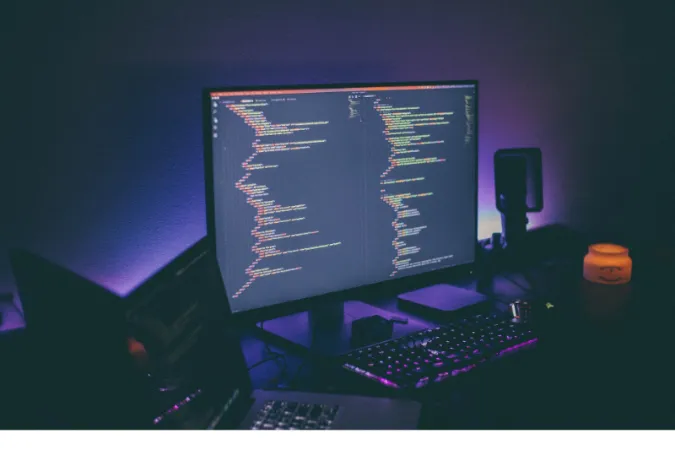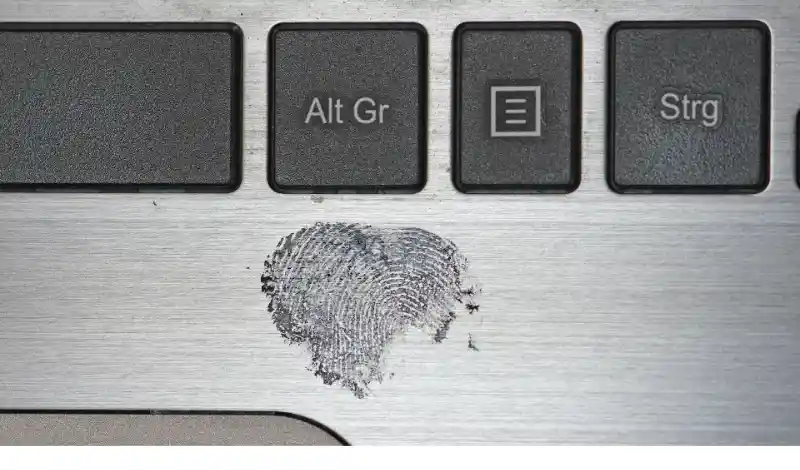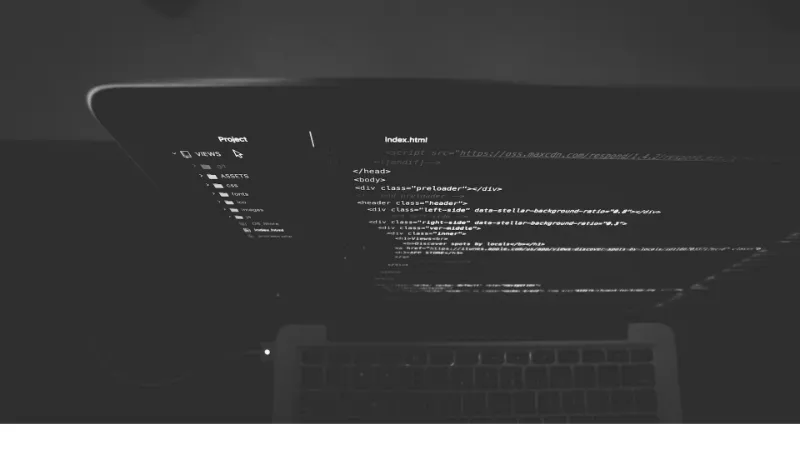Hey there! If you’ve ever wondered, “What is digital forensics in simple terms?” you’ve come to the right place.
Digital forensics is the process of uncovering and interpreting electronic data to help solve digital mysteries.
It’s like being a detective but for the digital world! From cybercrime investigations to data breaches, digital forensics plays a crucial role in understanding and mitigating these incidents.
What is Digital Forensics?
Digital forensics is the art and science of examining electronic data to extract valuable information, whether it’s for legal, investigative, or security purposes.
This includes analyzing computer systems, mobile devices, networks, and even cloud services to find hidden evidence and understand the events that took place.
The primary goal of digital forensics is to preserve the integrity of digital evidence and present it in a way that can be used in legal proceedings or to improve cybersecurity practices.
Fun Fact #1: Digital forensics has been used to solve aviation accidents: Digital forensic experts have been called upon to investigate aviation accidents and determine the cause of the crash. By analyzing data from flight recorders, radar systems, and other digital sources, they can reconstruct the events leading up to the accident and identify any mechanical or human errors that may have occurred
Why is it Important?
In today’s digital age, we’re all surrounded by technology. Our lives are intertwined with electronic devices, from our smartphones and laptops to the ever-growing Internet of Things.
And as we rely more on these devices, the potential for digital crime increases. That’s where digital forensics comes in – it’s the key to understanding and solving digital mysteries.
Digital forensics helps us to:
- Investigate and solve cybercrimes
- Uncover evidence in legal cases involving digital data
- Protect businesses and individuals from data breaches and cyber-attacks
- Recover lost or damaged data
- And much more!
Is digital forensics a good career? You bet it is! With the rapid growth of technology and the increasing demand for digital forensic experts, there’s never been a better time to dive into this fascinating field.
If you want to know more about the various branches of digital forensics, check out our guide on digital forensics branches.
Fun Fact #2: Digital forensics has been used to solve sports-related cases: Digital forensic techniques have been used in sports-related cases to investigate doping, match-fixing, and other forms of cheating. For example, in 2016, digital forensic evidence helped to prove that Russian athletes had engaged in state-sponsored doping, leading to their ban from the Olympics
The Digital Forensics Process
Digital forensics isn’t just about diving headfirst into a digital haystack looking for that one shiny needle; it’s a systematic process ensuring digital evidence’s integrity and admissibility.
Let’s walk through the five (5) main stages of the digital forensics process.
Identification
This is where it all begins. In the identification phase, digital forensic investigators determine the scope of the investigation and identify potential sources of digital evidence.
They’ll look for electronic devices, storage media, and network logs that may contain relevant information. The goal is to create a roadmap for the investigation so they know where to focus their efforts.
Preservation
Once potential evidence sources have been identified, preserving them is crucial. This means protecting digital evidence from accidental or intentional tampering, alteration, or deletion.
Forensic investigators use specialized techniques and tools to create a “forensic image” of the original data, which is an exact copy that can be safely analyzed without risking the integrity of the original evidence.
Collection
Now that the evidence is preserved, it’s time to collect it. This involves extracting the relevant data from the identified sources, such as computer hard drives, mobile devices, and network logs.
Following a well-documented procedure and maintaining a clear chain of custody is essential to ensure the evidence remains admissible in court.
Learn how to acquire a forensic image using the command line from our tutorial post.
Analysis
This is where the magic happens. In the analysis phase, digital forensic experts sift through the collected data to uncover hidden evidence and piece together the digital puzzle.
They’ll use various tools and techniques to recover deleted files, decrypt encrypted data, and analyze system logs to reconstruct the events that took place.
The goal is to provide a clear and accurate picture of what happened, who was involved, and how it all went down.
Check out our data recovery vs. digital forensics article to understand their differences.
Presentation
Finally, the results of the analysis need to be presented in a clear and concise manner. This could be in the form of a written report, expert testimony in court, or a presentation to a client.
The key is to communicate the findings in a way that’s easy to understand, even for those without a background in digital forensics.
Now that we’ve got a handle on the digital forensics process. Let’s explore the different types of digital forensics in the next section.
Types of Digital Forensics
Digital forensics is a diverse field with many specialized branches, each focusing on a specific aspect of the digital world.
Let’s take a closer look at some of the most common types of digital forensics.
Computer Forensics
This is probably what comes to mind when you think of digital forensics.
Computer forensics focuses on analyzing data from computer systems, including desktops, laptops, and servers. Investigators dig into hard drives, memory, and system logs to uncover evidence of cybercrimes, data breaches, and other digital incidents.
Mobile Device Forensics
With smartphones and tablets practically glued to our hands, it’s no surprise that mobile device forensics is a rapidly growing field.
Mobile forensics experts specialize in extracting and analyzing data from mobile devices, including call logs, text messages, photos, and app data. It’s a challenging field due to the sheer variety of devices, operating systems, and security measures.
Network Forensics
Network forensics monitors and analyzes network traffic to detect and investigate cyber-attacks, data breaches, and other security incidents.
Experts in this field use tools like packet sniffers and network analyzers to capture and dissect network data, helping them understand the nature of an attack and identify its source.
Cloud Forensics
As more and more data is stored in the cloud, the need for cloud forensics has grown.
This branch of digital forensics deals with the challenges of investigating data stored on remote servers and services, such as Dropbox, Google Drive, or Amazon Web Services.
Cloud forensics experts must navigate the complexities of multi-tenant environments, data privacy regulations, and jurisdictional issues.
Social Media Forensics
Social media is an essential part of our daily lives and a goldmine of digital evidence.
Social media forensics involves the examination of social media platforms, such as Facebook, Twitter, and Instagram, to uncover evidence and gain insights into digital crimes, harassment, or other incidents.
To learn more about the various branches of digital forensics and who uses them, check out our articles on digital forensics branches and who uses digital forensics.
Digital Forensics Tools and Techniques
Whether you’re a seasoned digital forensics professional or just getting started in the field, having the right tools and techniques at your disposal can make all the difference.
Let’s explore some of the most popular tools and techniques used in digital forensics.
Open-Source Tools
There are numerous open-source tools available that can help digital forensic investigators in their quest for digital evidence. Some popular open-source tools include:
- Autopsy: A versatile digital forensics platform that supports file carving, timeline analysis, and more.
- Sleuth Kit: A collection of command-line tools for forensic analysis of disk images and file systems.
- Wireshark: A widely-used network protocol analyzer that allows investigators to capture and analyze network traffic.
- Volatility: A powerful memory forensics framework for analyzing volatile memory (RAM) from a wide range of systems.
Commercial Tools
While open-source tools can be incredibly useful, there are also commercial tools available that offer additional features and support. Some popular commercial tools include:
- EnCase: A comprehensive digital forensics suite with a wide range of capabilities, including disk imaging, file carving, and network forensics.
- FTK: A powerful digital forensics tool that supports advanced data recovery, password cracking, and email analysis.
- Cellebrite: A leader in mobile device forensics, offering tools for extracting and analyzing data from a wide range of mobile devices.
Find more digital forensics tools in our guide to the best digital forensics tools and software.
Techniques for Data Recovery and Analysis
In addition to using specialized tools, digital forensic investigators rely on various techniques to uncover hidden evidence and make sense of the data they collect.
Some common techniques include:
- File carving: The process of extracting files from raw data, even if the file system metadata is missing or damaged. Learn about the best file carving tools in our guide.
- Database forensics: Analyzing the contents of databases to uncover evidence, such as deleted records or unauthorized transactions. Check out our list of the best database forensics tools.
- Metadata analysis: Examining the metadata of files, such as timestamps and geolocation data, to gain insights into creating and modifying digital evidence. Discover how to view EXIF metadata in our tutorial.
You’ll be well-equipped to tackle any digital investigation with the right tools and techniques in your digital forensics toolbox.
But it’s not just about the technology – understanding digital forensics’ legal and ethical considerations is equally important.
Legal and Ethical Considerations in Digital Forensics
As a digital forensics professional, it’s essential to be aware of the legal and ethical considerations that come into play when conducting investigations.
This helps ensure that the evidence collected is admissible in court and that all parties’ rights are protected.
Chain of Custody
Maintaining a clear chain of custody is critical in digital forensics. This involves documenting every step of the evidence-handling process, from the initial collection to the final presentation in court.
A well-maintained chain of custody ensures that the evidence has not been tampered with or altered and helps to establish its integrity and admissibility in legal proceedings.
Privacy and Data Protection
Privacy and data protection are important concerns in digital forensics, especially when dealing with sensitive personal information.
Investigators must be mindful of applicable privacy laws and regulations, such as GDPR in the European Union or CCPA in California, and take steps to protect individuals’ privacy.
This may include obtaining proper authorization or warrants, using encryption to secure data, and minimizing the collection of non-relevant data.
Ethical Conduct
Upholding high ethical standards is crucial in digital forensics.
Investigators should conduct their work with integrity, honesty, and professionalism, avoiding any actions that could compromise the evidence or harm innocent parties.
This may include:
- Ensuring that investigations are based on justifiable suspicion
- Respecting the rights of individuals involved in the investigation
- Avoiding conflicts of interest
- Being transparent and objective in the analysis and presentation of evidence
To learn more about the advantages and disadvantages of digital forensics, take a look at our article on the pros and cons of digital forensics.
Conclusion
Well, we’ve come a long way in this comprehensive guide to digital forensics, haven’t we?
We’ve covered the basics, walking through the digital forensics process, explored the different types of digital forensics, and discussed some popular tools and techniques.
Plus, we’ve touched on the importance of legal and ethical considerations when working in this field.
Digital forensics is an exciting and rapidly evolving field, and it’s clear that the demand for skilled professionals will continue to grow.
So, is digital forensics a good career? Absolutely! It’s a rewarding and challenging field with plenty of opportunities for growth and specialization.
If you’re interested in pursuing a career in digital forensics, it’s worth noting that while having programming skills can be beneficial, it’s not always required.
You can read more about this in our article on whether digital forensics requires coding or programming skills.
We hope this guide has provided you with valuable insights and inspired you to explore the fascinating world of digital forensics further.
Remember, knowledge is power, and the more you learn, the better prepared you’ll be to tackle the digital challenges of the future. Good luck!









